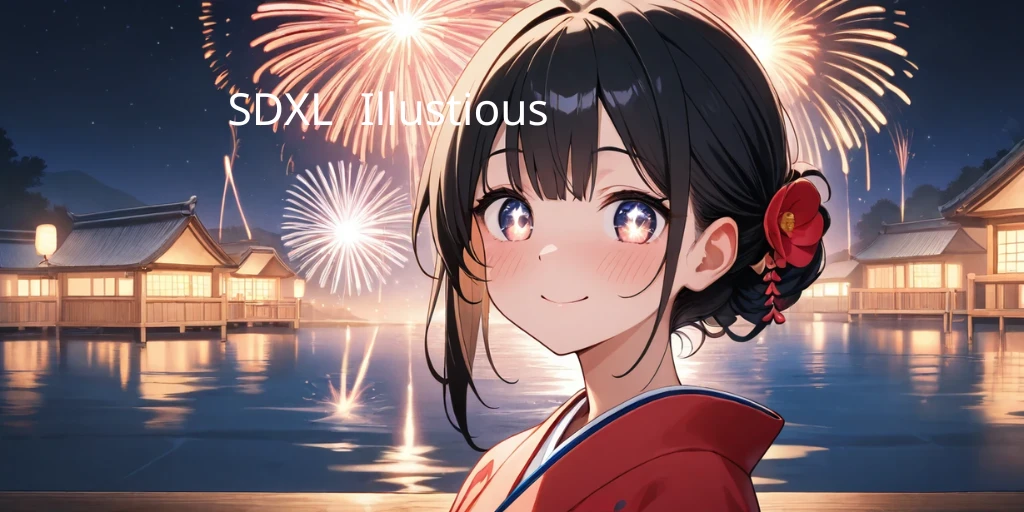potential helper at the beginning (or maybe end!) of your prompt!
e.g.
(masterwork, x, y, z, award-winning, masterpiece, best quality, hyper-detailed, 8k uhd::1.4),
x = image type, i.e. sketch, photo, portrait, manga page, etc.
y = character name(s)
z = artist (if specified)
(followed by character count (1girl, 2girls), character description, location, action, other details)
Example:
prompt:
(masterwork, portrait, princess midna, fan no hitori, award-winning, masterpiece, best quality, hyper-detailed, 8k uhd::1.4), 1girl, large breasts, blue eyes, skinny, slim, ?, gaunt, smile, blue textured bodysuit, cleavage, fur trim, outdoors, castle, looking at viewer, anime coloring, shiny skin,Cinematic Light,Negative prompt: lowres, worst quality, bad quality, bad anatomy, sketch, jpeg artifacts, signature, watermark, artist name, old, oldest Steps: 26, baseModel: SDXL, quantity: 4, width: 832, height: 1216 , Seed: 2455922073, draft: false, nsfw: true, workflow: txt2img, Clip skip: 2, CFG scale: 6, Sampler: Euler a, fluxMode: undefined)
Overview
My testing has revealed several key differences from other model types like Pony:
● Text generation is usually cleaner
● backgrounds show better coherence
● concept recognition = surprisingly robust
● significant reduction in watermarks
● importantly, negative prompts tend to behave better
○ though, as a trade-off, they are much more necessary
● additionally, I can confirm, as others have found, both style and character training seem to produce more reliable results
On a subjective note, I've found that I just tend to like the images produced more versus something like Pony. Also, I find that it's just easier to work with and to get better images quickly.
Optimal Settings
Based on both testing and official documentation:
● CFG Range: 4.5-7.5 (sweet spot around 5.5)
● Recommended Sampler: Euler A
● Steps: 20+ (24 recommended)
Working Prompt Structure
As I mentioned above, you definitely need to massage the prompt a bit more than most other models, at least at this point in time (Illustrious XL v0.1). As a result, you need to have quality tags in your positive prompt and a pretty extensive negative prompt to get it to work well.
Prompt Structure
Core Structure
1. Character count (1girl, 2girls, etc.)
2. Character names (if any)
3. Quality tags
4. Physical features & clothing
5. Pose & anatomical details
6. Environment/background
7. Additional quality/style tags
Positive prompt tags (put at end or beginning)
From the paper, their actual example quality tags are much simpler:
● "masterpiece"
● "general" (as a rating tag for safe for work images)
● "absurdres"
● "year 2023"
Technically these are all you need to produce a good image, according to the Illustrious paper. I've also corroborated this in my own testing.
However, I've found that these prompt tags can produce fairly consistent results when used in combination with those tags above:
perfect quality, best quality, absolutely eye-catching,
and with more realistic/detailed imagery:
perfect quality, best quality, absolutely eye-catching, ambient occlusion, raytracing,
ambient occlusion/raytracing help with 2.5d/semi-real style especially
Negative prompt
After a lot of experimentation, I found this works the best, on average, pretty much every time:
lowres, (bad), bad anatomy, bad hands, extra digits, multiple views,fewer, extra, missing, text, error, worst quality, jpeg artifacts, low quality, watermark, unfinished, displeasing, oldest, early,chromatic aberration, signature,artistic error, username, scan
or as a shorter alternative:
lowres, worst quality, bad quality, bad anatomy, sketch, jpeg artifacts, signature, watermark, artist name, old, oldest
1girl, ashley_grah4m, anatomically correct, proper proportions,
neon lighting, glowing blonde hair, rainbow inner hair, blue eyes,well-defined pose, standing pose, balanced pose,detailed environment, professional lighting, clear composition,looking at viewer, seductive expression,masterpiece, best quality, absurdres
Creating Effective Backgrounds
Structure for Background Prompts:
Environment Base:
detailed environment, [location type], clear composition
Architectural Elements:
[material types], [structural elements], [decorative elements]
Lighting and Atmosphere:
[time of day], [lighting type], [atmosphere effects]
Example Background Combinations:
Indoor Scenes:
luxurious room, detailed architecture, marble floor, ornate furniture,
crystal chandeliers, tall windows, decorative columns,
warm ambient lighting, soft shadows, volumetric lighting
Outdoor Urban:
detailed cityscape, modern architecture, glass buildings,
city streets, urban details, store fronts,
night scene, neon lighting, street lamps, ambient occlusion
Natural Settings:
detailed landscape, rolling hills, dense forest,
rocky outcrops, flowing water, detailed foliage,
golden hour lighting, atmospheric haze, dynamic clouds
Background Best Practices:
1. Start with broad environment definition
2. Add specific architectural or natural elements
3. Include material descriptions
4. Define lighting and atmosphere
5. Maintain consistency with character lighting
6. Use environmental quality tags
Tips for Better Backgrounds:
● Add depth indicators (foreground, midground, background)
● Include atmospheric effects
● Specify clear lighting sources
● Use architectural details for indoor scenes
● Add environmental context
● Keep perspective consistent with character pose
Common Background Issues:
● Inconsistent lighting between character and background
● Perspective mismatches
● Lack of detail in middle ground
● Poor integration with character
● Missing environmental context
Solutions:
1. Use consistent lighting descriptors
2. Add specific perspective tags
3. Include depth and distance markers
4. Specify material and texture details
5. Use architectural or natural anchoring elements
Known Issues
● Multiple competing style tags tend to produce inconsistent results
● Needs specific prompting to work well
Best Practices
● Use those prompts from above!
● Start with minimal parameters
● Pay particular attention to lighting descriptors
● Monitor CFG impact on output quality
Additional help re: Angles/Lighting
angles, use/mix these after quality tags at beginning of prompt:
from above,
from below,
close-up,
portrait,
POV,
birds-eye,
wide shot,
isometric,
(+ view, depending)
lighting, after angle tags, beginning or very end of prompt:
Cinematic Light,
Hollywood Lighting,
Backlighting,
Rim lighting,
Soft lighting,
harsh lighting,
Dramatic light,
film-style contrast,
soft shadows,
harsh shadows,
(you may have to fiddle with the position and wording of those, but they should mostly work as is)
Conclusion
Since this is a very new model, expect ongoing discoveries about optimal usage patterns.
Feel free to ask questions or share your own findings and experiments!


